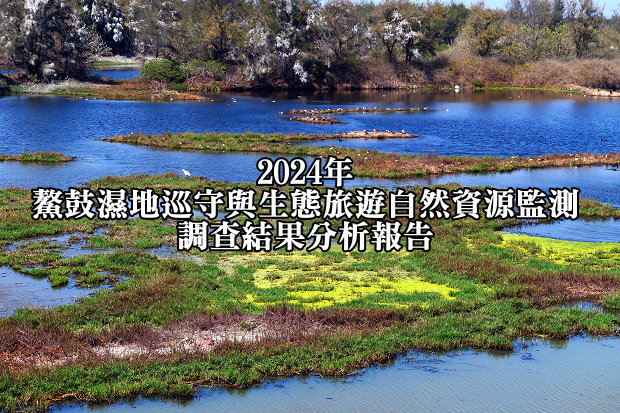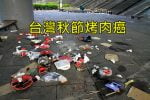全球永續旅遊準則—住宿業與旅行業篇第二版中英對照稿
Global Sustainable Tourism Criteria for Hotels and Tour Operators
張顧獻、賴鵬智翻譯 陶維極審校
The following is the second version of the GSTC Criteria for Hotels and Tour Operators, released in March 2012, based on incorporating three years of public comment on version 1 (released in 2008). For a comparison between version 1 and version 2, follow this link. For the text of version 1, please select your langauge of preference to the right.
全球永續旅遊推動聯盟於2012年3月公布了第二版「全球永續旅遊準則—住宿業與旅遊業篇」,這是2008年第一版公布後,歷經三年整合各方意見,酌予修訂後的版本。
您若要瞭解第一版內容並加以比較,可以點閱「賴鵬智的野FUN特區」部落格「全球永續旅遊準則定稿中英對照版」https://blog.pcbird.org/archives/2387,或點閱全球永續旅遊推動聯盟網頁右側欄位並選擇「Chinese」(採用同為張顧獻、賴鵬智合譯,陶維極審校之翻譯稿,唯因編碼問題而有落字情形)參考其內容。
全球永續旅遊準則—住宿業與旅行業篇第二版前言
Sustainable tourism is on the rise: consumer demand is growing, travel industry suppliers are developing new green programs, and governments are creating new policies to encourage sustainable practices in tourism. But what does “sustainable tourism” really mean? How can it be measured and credibly demonstrated, in order to build consumer confidence, promote efficiency, and fight false claims?
近年來,消費者需求持續成長、旅遊業不斷發展出新的綠色方案,以及公部門推出鼓勵業者力行永續手法的方針,在在顯示永續旅遊的市場蒸蒸日上。但「永續旅遊」真正的意義是什麼?要如何評量並明確地從日常經營中取得信用,來建立消費者信心、提升效率,並打擊掛羊頭賣狗肉的騙人勾當?
The Global Sustainable Tourism Criteria are an effort to come to a common understanding of sustainable tourism, and are the minimum that any tourism business should aspire to reach. They are organized around four main themes:
- effective sustainability planning
- maximizing social and economic benefits for the local community
- enhancing cultural heritage
- reducing negative impacts to the environment.
我們最下限要求,希望全球永續旅遊準則成為全世界永續旅遊的共識,任何旅遊業者應該努力追求達成。這些準則觀照四個主題:
l 有效的永續規劃
l 儘量增強在地社區的社會與經濟利益
l 增進文化遺產的價值
l 盡可能不破壞環境
Although the criteria are initially intended for use by the accommodation and tour operation sectors, they have applicability to the entire tourism industry.
儘管設立準則的初衷是供住宿業者與旅行業者運用,但實際上這些準則可以應用在所有旅遊相關產業上。
The criteria are part of the response of the tourism community to the global challenges of the United
這些準則是旅遊業界對聯合國因應全球變遷提出的千禧年發展目標(譯按:2002年提出)所作的回應。減少貧困及永續環境—包括氣候變遷—是準則內所針對的廣面議題,這些在準則中都提出了因應對策。
Beginning in 2007, a coalition of 27 organizations – the Partnership for Global Sustainable Tourism Criteria – came together to develop the criteria. They have out to close to 80,000 tourism stakeholders, analyzed more than 4,500 criteria from more than 60 existing certification and other voluntary sets of criteria, and received comments from over 1500 individuals. The first version of the criteria was released in October 2008 and was publicly available for comment until April 2011. The Global Sustainable Tourism Council reviewed all comments received, responded to each, and revised the criteria accordingly. The revised criteria were available for public comment and review from July 15 – October 15, 2011 in English, French, Spanish, and Mandarin. Again all comments were reviewed and addressed, to produce this version 2 of the Global Sustainable Tourism Criteria for hotels and tour operators. The next revision will take place in 2016. The Global Sustainable Tourism Criteria are administered by the Global Sustainable Tourism Council.
2007年起,由27個組織組成的全球永續旅遊準則聯盟開始發展準則項目,他們收集了將近八萬名旅遊權益相關者意見,並分析全世界六十多個認證系統或自發方案四千五百餘項準則,還獲取一千五百位以上專家學者的意見。2008年10月公布第一版準則,並且持續公開收集各方意見到2011年4月止。全球永續旅遊準則聯盟檢視並回應收到的每一項建議,同時據以修訂準則。修訂後的準則內容再從2011年7月15日到10月15日以英文、法文、西班牙文及中文公開審視及徵求意見。再一次整合所有意見後,終於產生這次第二版本的住宿業與旅遊業全球永續旅遊準則。下一版本修訂的程序將從2016年開始。全球永續旅遊聯盟負責全球永續旅遊準則之研訂與推動事宜。
Some of the expected uses of the criteria include the following:
- Serve as basic guidelines for businesses of all sizes to become more sustainable, and help businesses choose sustainable tourism programs that fulfill these global criteria;
- Serve as guidance for travel agencies in choosing suppliers and sustainable tourism programs;
- Help consumers identify sound sustainable tourism programs and businesses;
- Serve as a common denominator for information media to recognize sustainable tourism providers;
- Help certification and other voluntary programs ensure that their standards meet a broadly-accepted baseline;
- Offer governmental, non-governmental, and private sector programs a starting point for developing sustainable tourism requirements; and
- Serve as basic guidelines for education and training bodies, such as hotel schools and universities.
我們對各界使用準則的幾項期待如下:
l 無論企業規模大小,都將準則視為讓自己永續經營的基本規範,並據以選擇符合這個全球性準則的永續旅遊方案;
l 旅行社作為選擇供應商及永續旅遊方案的指引;
l 協助消費者辨別信用可靠的永續旅遊方案與業者;
l 成為媒體辨識永續旅遊業者的參考;
l 讓標章認證單位或自發方案單位審視自己的標準是否符合廣泛可接受的基準;
l 提供政府、非政府組織及私部門擬定發展永續旅遊相關方案時之基本參考;
l 作為餐旅學校或大學等教育訓練機構的基本方針。
The criteria indicate what should be done, not how to do it or whether the goal has been achieved. This role is fulfilled by performance indicators, associated educational materials, and access to tools for implementation, all of which are an indispensable complement to the Global Sustainable Tourism Criteria.
這些準則是告訴我們哪些事情該做,而不是教我們如何做或是否達成目標。我們透過績效指標、相關教材,以及取得用以落實這些準則的工具來達到準則的功能。
The Global Sustainable Tourism Criteria were conceived as the beginning of a process to make sustainability the standard practice in all forms of tourism.
我們的初衷是期盼邁向永續成為所有旅遊業的標準做法,且以全球永續旅遊準則為起點。
Application
It is recommended that all criteria be applied to the greatest extent practical, unless for a specific situation the criterion is not applicable and this is justified. There may be circumstances in which a criterion is not applicable to a specific tourism product, given the local regulatory, environmental, social, economic or cultural conditions. In the case of micro and community-owned tourism businesses which have a small social, economic and environmental footprint, it is recognized that limited resources may prevent comprehensive application of all criteria.
Further guidance on these criteria may be found from the supporting indicators and glossary, which are published by the Global Sustainable Tourism Council.
應用
除非特殊狀況無法適用,業者應該儘可能運用全球永續旅遊準則。可能因為某個情形,某項旅遊產品無法適用某項準則,這時應參考地方法規、環境、社會、經濟或文化而斟酌如何履行準則。微型或社區型旅遊業者的資源有限,對社會、經濟與環境本就衝擊不大,因此可以不必完全符合所有準則。
若想進一步瞭解準則,請點閱全球永續旅遊聯盟的「補充資料」與「詞彙解釋」網頁。
全球永續旅遊準則—住宿業與旅行業篇第二版(2012年公布)
Global Sustainable Tourism Criteria for Hotels and Tour Operators version 2
A. Demonstrate effective sustainable management. 展現有效的永續經營管理方式
A1 The organization has implemented a long-term sustainability management system that is suitable to its reality and scope, and which addresses environmental, social, cultural, economic, quality, health and safety issues. 組織已經實施長期的永續經營管理系統,該系統適用於現況及其規模,也考慮到環境、社會、文化、經濟、品質、健康及安全等要項。
A2 The organization is in compliance with all applicable local to international legislation and regulations (including, among others, health, safety, labor and environmental aspects). 組織經營皆符合國內及國際法律規定,包括健康、安全、勞工和環境等各方面。
A3 All personnel receive periodic guidance and training regarding their roles and responsibilities with respect to environmental, social, cultural, economic, quality, health and safety issues. 所有員工依據其角色與責任,定期接受有關環境、社會文化、健康及安全等方面的指導及教育訓練。
A4 Customer satisfaction, including sustainability aspects, is measured and corrective action taken. (註1) 評量旅客滿意度,並採取適當的改善行動。
A5 Promotional materials are accurate and complete with regard to the organization and its products and services, including sustainability claims. They do not promise more than is being delivered. 促銷方案內容必須完整、正確,應包含其永續主張,且不要作超過組織能力範圍的承諾。
A6 Planning, design, construction, renovation, operation and demolition of buildings and infrastructure … 規劃、設計、施工、整修、使用以及建築物和基礎設施拆除時應顧及以下各項要求:
A.6.1 …comply with zoning requirements and with laws related to protected areas and heritage consideration. 符合土地分區管制規定,以及保護區或文化遺產之相關法令。
A.6.2 …respect the natural and cultural heritage surroundings in planning, siting, design and impact assessment. 在規劃、選址、設計和衝擊評估時,應尊重自然及文化遺產周遭的環境。
A.6.3 …use locally appropriate sustainable practices and materials. 採用源自當地且適當的永續做法和材料
A.6.4 …provide access for persons with special needs, where appropriate. 在適當的地點,提供有特殊需求的人們得以親近的機會。
A7 Land and water rights, and property acquisition are legal, comply with local communal and indigenous rights, including their free, prior and informed consent, and do not require involuntary resettlement. 取得土地、水權和財產的方式合法,符合當地社區及固有的權益、不會強迫地方人士同意、而且讓地方人士詳細了解後才要求同意;並且不強迫當地居民遷徙或重新安置。
A8 Information about and interpretation of the natural surroundings, local culture, and cultural heritage is provided to customers, as well as explaining appropriate behavior while visiting natural areas, living cultures, and cultural heritage sites. 提供周遭自然資源、在地文化及文化遺產之相關資訊與解說,並且要求遊客在參訪自然區域、現地生活文化及文化遺址時應遵守行為規範。
B. Maximize social and economic benefits to the local community and minimize negative impacts. 為當地社區之社會與經濟創造最大利益,並將負面衝擊降到最小。
B1 The organization actively supports initiatives for local infrastructure and social community development including, among others, education, training, health and sanitation. (註2) 組織應積極支持當地基礎建設和社區發展,包括教育、訓練、健康、公共衛生等方面。
B2 Local residents are given equal opportunity for employment including in management positions. All employees are equally offered regular training, experience and opportunities for advancement應提供當地居民公平的聘僱機會,包括管理職位在內;且給予所有的雇員同等的常規訓練、經驗傳承及機會。
B3 Local services and goods are purchased and offered by the organization, following fair-trade principles. 依據公平交易的原則,組織應採購及提供源自當地的服務及產品。
B4 The organization offers the means for local small entrepreneurs to develop and sell sustainable products that are based on the area’s nature, history and culture (including food and beverages, crafts, performance arts, agricultural products, etc.). 組織應提供機會或方法協助當地小型企業的發展及販賣源自當地自然、歷史、文化的永續產品(例如食物、飲料、手工藝品、表演藝術、農特產品等)。
B5 A documented code of conduct for activities in indigenous and local communities has been developed and implemented with the collaboration and consent of the affected community. 在受影響社區的合作及同意下,建立及實施與原住民或當地社區活動有關的管理規範。
B6 The organization has implemented a policy against commercial, sexual or any other form of exploitation and harassment, particularly of children, adolescents, women and minorities. (註3) 組織應執行抵制商業上、性方面或任何其他型態的剝削和騷擾的方針,尤其是關於兒童、青少年、女性和少數民族。
B7 The organization offers equal employment opportunities to women, local minorities and others, including in management positions, while restraining child labor. (註4) 組織應提供給女性、當地少數民族及其他人公平的聘僱機會,包括管理職位在內,並禁止僱用童工。
B8 The international or national legal protection of employees is respected, and employees are paid at least a living wage. 員工應受國際或國內法律保障,且領有能夠維持基本生活的工資。
B9 The activities of the organization do not jeopardize the provision of basic services, such as food, water, energy, healthcare or sanitation, to neighboring communities. (註5) 組織的活動不能危及鄰近社區生活基本服務,如食物、水、能源、保健或公共衛生。
B10 Tourism activity does not adversely affect local access to livelihoods, including land and aquatic resource use, rights-of-way, transport and housing. 旅遊活動不能對當地賴以維生的權益產生不良影響,如土地和水生物資源的使用、通行權、運輸和住宅供給。
C. Maximize benefits to cultural heritage and minimize negative impacts. 儘量發揮文化遺產效益,並將破壞降到最小。
C1 The organization follows established guidelines or a code of behavior for visits to culturally or historically sensitive sites, in order to minimize negative visitor impact and maximize enjoyment. 組織須遵守所造訪文化或歷史敏感區上既有的指導方針或行為規範,以期儘量減少旅客帶來的破壞,並增進旅遊樂趣。
C2 Historical and archeological artifacts are not sold, traded or displayed, except as permitted by local to international law. 除非當地或國際法律允許,不可販售、貿易或陳列具歷史及考古意義的手工藝品。
C3 The organization contributes to the protection and preservation of local historical, archeological, culturally and spiritually important properties and sites, and does not impede access to them by local residents. 組織應促進對當地歷史、考古、文化及精神重要資產與區位的維護,而且不阻礙當地居民使用或接近該資產的權利。
C4 The organization incorporates elements of local art, architecture, or cultural heritage in its operations, design, decoration, food, or shops; while respecting the intellectual property rights of local communities. 組織吸納當地藝術、建築或文化遺產的元素而體現在其經營、設計、裝潢(飾)、食品或店面上,同時尊重當地社區的智慧財產權。
D. Maximize benefits to the environment and minimize negative impacts. 創造環境最大效益並儘量減少破壞
D1 Conserving resources 節約資源:
D1.1 Purchasing policies favor locally appropriate and ecologically sustainable products, including building materials, capital goods, food, beverages and consumables. 採購方針應優先考慮當地適宜及永續生態的產品,包括建築材料、資本財、食物、飲料及消耗品。
D1.2 The purchase and use of disposable and consumable goods is measured and the organization actively seeks ways to reduce their use. 組織應衡量是否一定要購買與使用拋棄式用品及消耗品,並積極設法減少使用該類產品。
D1.3 Energy consumption is measured, sources are indicated, and measures are adopted to minimize overall consumption, and encourage the use of renewable energy. 評量能源使用狀況及確認其來源,並採取有效措施以減少整體耗能,也鼓勵使用再生能源。
D1.4 Water consumption is measured, sources are indicated, and measures are adopted to minimize overall consumption. Water sourcing is sustainable, and does not adversely affect environmental flows. 評量水資源使用狀況及確認其來源,並運用監測以採取有效措施減少整體耗水量。水源的取用應符合永續原則,且不影響環境流量。
D2 Reducing pollution 減少污染:
D2.1 Greenhouse gas emissions from all sources controlled by the organization are measured, procedures are implemented to minimize them, and offsetting remaining emissions is encouraged. 組織須監控所有來源所排放的溫室氣體,並減少排放,甚至抵銷剩餘的排放。
D2.2 The organization encourages its customers, staff and suppliers to reduce transportation-related greenhouse gas emissions. 組織應鼓勵旅客、員工及供應商致力減少因交通運輸而排放的溫室氣體。
D2.3 Wastewater, including gray water, is effectively treated and is only reused or released safely, with no adverse effects to the local population and the environment. (註6) 應有效處理廢水(包括不含污物和排泄物的灰水),設法重複使用或經過安全處理後,確認不會對當地居民及環境造成不良影響才放流。
D2.4 Waste is measured, mechanisms are in place to reduce waste, and where reduction is not feasible, to re-use or recycle it. Any residual waste disposal has no adverse effect on the local population and the environment. 監控廢棄物量,實施減量措施,再不濟,就改為重複使用或資源回收。而處置的垃圾應確保不會傷害當地居民及環境。
D2.5 The use of harmful substances, including pesticides, paints, swimming pool disinfectants, and cleaning materials, is minimized, and substituted when available, by innocuous products or processes. All storage, use, handling, and disposal of chemicals are properly managed. (註7) 非萬不得已不使用有害物質,如殺蟲劑、塗料、游泳池消毒劑、清潔用品等,儘可能以無害產品或流程替代。應適當地管理所有化學品的貯存、使用、搬運和處置等。
D2.6 The organization implements practices to minimize pollution from noise, light, runoff, erosion, ozone-depleting compounds, and air, water and soil contaminants. 組織應減少來自噪音、亮光、逕流、侵蝕、耗損臭氧層之化合物,以及空氣、水和土壤污染物所造成的污染。
D3 Conserving biodiversity, ecosystems, and landscapes保存生物多樣性、生態系統及地貌景觀:
D3.1 Wildlife species are not harvested, consumed, displayed, sold, or traded, except as part of a regulated activity that ensures that their utilization is sustainable, and in compliance with local to international laws. (註8) 除非在確保可永續利用的規範下,且符合當地及國際法律,否則不得獵捕、消費、陳列、買賣或貿易野生動物。
D3.2 No captive wildlife is held, except for properly regulated activities, in compliance with local to international law. Living specimens of protected and wildlife species are only kept by those authorized and suitably equipped to house and care for them humanely. 除非有適切規範及符合當地與國際法律,否則不得保有採捕來的野生物。只有取得主管機關同意、並聘用專業人員為野生物提供人道的收容、照顧,才能養育活體保育類動物或野生物。
D3.3 The organization takes measures to avoid the introduction of invasive alien species.
D3.4 The organization supports and contributes to biodiversity conservation, including natural protected areas and areas of high biodiversity value. 組織應支持並對生物多樣性保育做出貢獻,包括贊助設立自然保護區及具有高度生物多樣性價值的區域。
D3.5 Interactions with wildlife, taking into account cumulative impacts, do not produce adverse effects on the viability and behavior of populations in the wild. Any disturbance of natural ecosystems is minimized, rehabilitated, and there is a compensatory contribution to conservation management. (註9) 考慮到日漸增加的衝擊,應確保與野生物的互動過程不會對野外族群的生存及行為造成不良影響;任何對自然生態系統的干擾要降到最低或恢復原狀,亦可在保育經營管理上採取生態補償措施。
註:
|
(1) The concept of customer satisfaction is clarified in the glossary, according to UNWTO indicators and GRI criteria. 旅客滿意度的定義請參考詞彙解釋,該定義根據UNWTO(聯合國世界旅遊組織)指標和GRI(全球永續報告指標)準則。 |
|
(2) Infrastructure: improvement or maintenance of community public institutions and physical plant (roads, aqueducts, sewage treatment, etc.) . 基礎建設:社區公共機構及實體建設(道路、溝渠、污水處理等等)的提升或維護。 |
|
(3) The signing of the code of conduct from UNWTO, UNICEF, ECPAT, etc. is evidence of implementation of policies (see www.thecode.org). 由UNWTO(聯合國世界旅遊組織)、UNICEF(聯合國兒童基金會)、 ECPAT(國際終止童妓組織)提供管理規範並予以簽署,可作為執行該方針的證據。 |
|
(4) “The term ‘child labor’ is often defined as work that deprives children of their childhood, their potential and their dignity, and that is harmful to physical and mental development. It refers to work that is mentally, physically, socially or morally dangerous and harmful to children; and interferes with their schooling by: depriving them of the opportunity to attend school; obliging them to leave school prematurely; or requiring them to attempt to combine school attendance with excessively long and heavy work.” https://www.ilo.org/ipec/facts/lang– en/index.htm 「童工」一詞經常被定義為剝奪兒童的童年時光、他們的潛能與尊嚴,且危及身心發展的工作。這樣的工作在心理、生理、社會及道德層面上都會危及兒童且造成傷害,不僅妨礙就學和剝奪他們就學的機會,甚至迫使他們提早離開學校,或是在過長及繁重的工作中兼顧課業。 |
|
(5) Including beachfront and waterfront access 包括接近海濱及濱水區的權利 |
|
(7) “Proper management of chemicals” defined in glossary. 「適當管理化學品」一詞在詞彙解釋中已有定義。 |
|
(8) “Wildlife” and “sustainable use” defined in glossary. 「野生物」一詞在詞彙解釋中已有定義。 |
|
(9) “Viability of populations” and “compensatory contributions” defined in glossary. 「族群的生存」和「生態補償措施」在詞彙解釋中已有定義。 |
如需此中英對照PDF檔,請來信[email protected]索取。
延伸閱讀:
全球永續旅遊準則定稿中英對照版
您若喜歡本篇資訊,歡迎在文章末按「讚」,協助推廣,謝謝。
全中文翻譯稿如下:
全球永續旅遊準則—住宿業與旅行業篇第二版(2012年公布)
A. 展現有效的永續經營管理方式
A1 組織已經實施長期的永續經營管理系統,該系統適用於現況及其規模,也考慮到環境、社會、文化、經濟、品質、健康及安全等要項。
A2 組織經營皆符合國內及國際法律規定,包括健康、安全、勞工和環境等各方面。
A3 所有員工依據其角色與責任,定期接受有關環境、社會文化、健康及安全等方面的指導及教育訓練。
A4 評量旅客滿意度,並採取適當的改善行動。
A5 促銷方案內容必須完整、正確,應包含其永續主張,且不要作超過組織能力範圍的承諾。
A6 規劃、設計、施工、整修、使用以及建築物和基礎設施拆除時應顧及以下各項要求:
A.6.1 符合土地分區管制規定,以及保護區或文化遺產之相關法令。
A.6.2 在規劃、選址、設計和衝擊評估時,應尊重自然及文化遺產周遭的環境。
A.6.3 採用源自當地且適當的永續做法和材料
A.6.4 在適當的地點,提供有特殊需求的人們得以親近的機會。
A7 取得土地、水權和財產的方式合法,符合當地社區及固有的權益、不會強迫地方人士同意、而且讓地方人士詳細了解後才要求同意;並且不強迫當地居民遷徙或重新安置。
A8 提供周遭自然資源、在地文化及文化遺產之相關資訊與解說,並且要求遊客在參訪自然區域、現地生活文化及文化遺址時應遵守行為規範。
B. 為當地社區之社會與經濟創造最大利益,並將負面衝擊降到最小。
B1 組織應積極支持當地基礎建設和社區發展,包括教育、訓練、健康、公共衛生等方面。
B2 應提供當地居民公平的聘僱機會,包括管理職位在內;且給予所有的雇員同等的常規訓練、經驗傳承及機會。
B3 依據公平交易的原則,組織應採購及提供源自當地的服務及產品。
B4 組織應提供機會或方法協助當地小型企業的發展及販賣源自當地自然、歷史、文化的永續產品(例如食物、飲料、手工藝品、表演藝術、農特產品等)。
B5 在受影響社區的合作及同意下,建立及實施與原住民或當地社區活動有關的管理規範。
B6 組織應執行抵制商業上、性方面或任何其他型態的剝削和騷擾的方針,尤其是關於兒童、青少年、女性和少數民族。
B7 組織應提供女性、當地少數民族及其他人公平的聘僱機會,包括管理職位在內,並禁止僱用童工。
B8 員工應受國際或國內法律保障,且領有能夠維持基本生活的工資。
B9 組織的活動不能危及鄰近社區生活基本服務,如食物、水、能源、保健或公共衛生。
B10 旅遊活動不能對當地賴以維生的權益產生不良影響,如土地和水生物資源的使用、通行權、運輸和住宅供給。
C. 儘量發揮文化遺產效益,並將破壞降到最小。
C1 組織須遵守所造訪文化或歷史敏感區上既有的指導方針或行為規範,以期儘量減少旅客帶來的破壞,並增進旅遊樂趣。
C2 除非當地或國際法律允許,不可販售、貿易或陳列具歷史及考古意義的手工藝品。
C3 組織應促進對當地歷史、考古、文化及精神重要資產與區位的維護,而且不阻礙當地居民使用或接近該資產的權利。
C4 組織吸納當地藝術、建築或文化遺產的元素而體現在其經營、設計、裝潢(飾)、食品或店面上,同時尊重當地社區的智慧財產權。
D 創造環境最大效益並儘量減少破壞
D1 節約資源:
D1.1 採購方針應優先考慮當地適宜及永續生態的產品,包括建築材料、資本財、食物、飲料及消耗品。
D1.2 組織應衡量是否一定要購買與使用拋棄式用品及消耗品,並積極設法減少使用該類產品。
D1. 評量能源使用狀況及確認其來源,並採取有效措施以減少整體耗能,也鼓勵使用再生能源。
D1.4 評量水資源使用狀況及確認其來源,並運用監測以採取有效措施減少整體耗水量。水源的取用應符合永續原則,且不影響環境流量。
D2 減少污染:
D2.1 組織須監控所有來源所排放的溫室氣體,並減少排放,甚至抵銷剩餘的排放。
D2.2 組織應鼓勵旅客、員工及供應商致力減少因交通運輸而排放的溫室氣體。
D2.3 (註6) 應有效處理廢水(包括不含污物和排泄物的灰水),設法重複使用或經過安全處理後,確認不會對當地居民及環境造成不良影響才放流。
D2.4 監控廢棄物量,實施減量措施,再不濟,就改為重複使用或資源回收。而處置的垃圾應確保不會傷害當地居民及環境。
D2.5 非萬不得已不使用有害物質,如殺蟲劑、塗料、游泳池消毒劑、清潔用品等,儘可能以無害產品或流程替代。應適當地管理所有化學品的貯存、使用、搬運和處置等。
D2.6 組織應減少來自噪音、亮光、逕流、侵蝕、耗損臭氧層之化合物,以及空氣、水和土壤污染物所造成的污染。
D3 保存生物多樣性、生態系統及地貌景觀:
D3.1 (註8) 除非在確保可永續利用的規範下,且符合當地及國際法律,否則不得獵捕、消費、陳列、買賣或貿易野生動物。
D3.2 除非有適切規範及符合當地與國際法律,否則不得保有採捕來的野生物。只有取得主管機關同意、並聘用專業人員為野生物提供人道的收容、照顧,才能養育活體保育類動物或野生物。
D3.3 組織應採取監控行動以避免引進外來入侵種。應儘量使用原生物種作為造景及整修的材料,尤其是應用在自然景觀上。
D3.4 組織應支持並對生物多樣性保育做出貢獻,包括贊助設立自然保護區及具有高度生物多樣性價值的區域。
D3.5 (註9) 考慮到日漸增加的衝擊,應確保與野生物的互動過程不會對野外族群的生存及行為造成不良影響;任何對自然生態系統的干擾要降到最低或恢復原狀,亦可在保育經營管理上採取生態補償措施。
如需此全中文PDF檔,請來信[email protected]索取。







